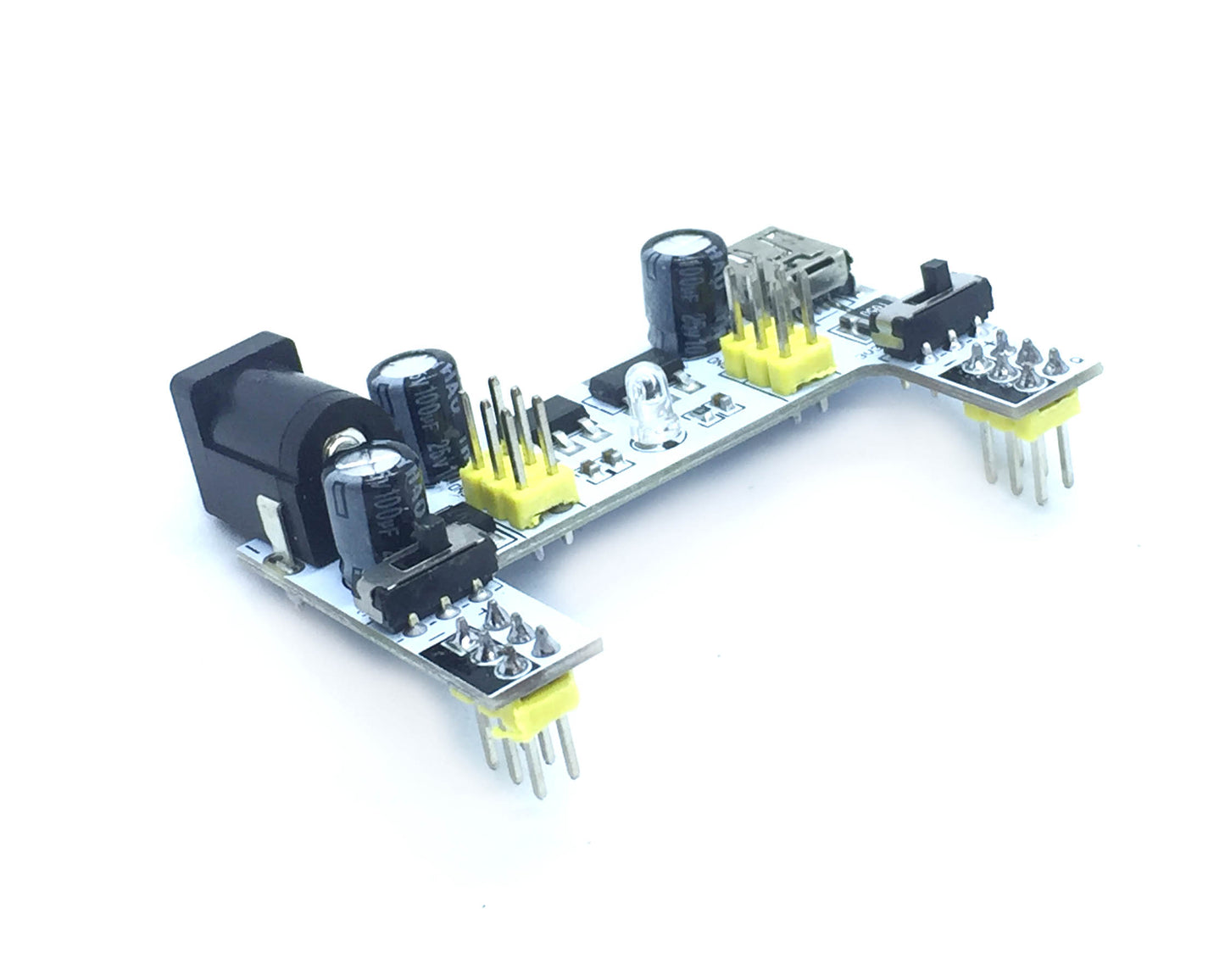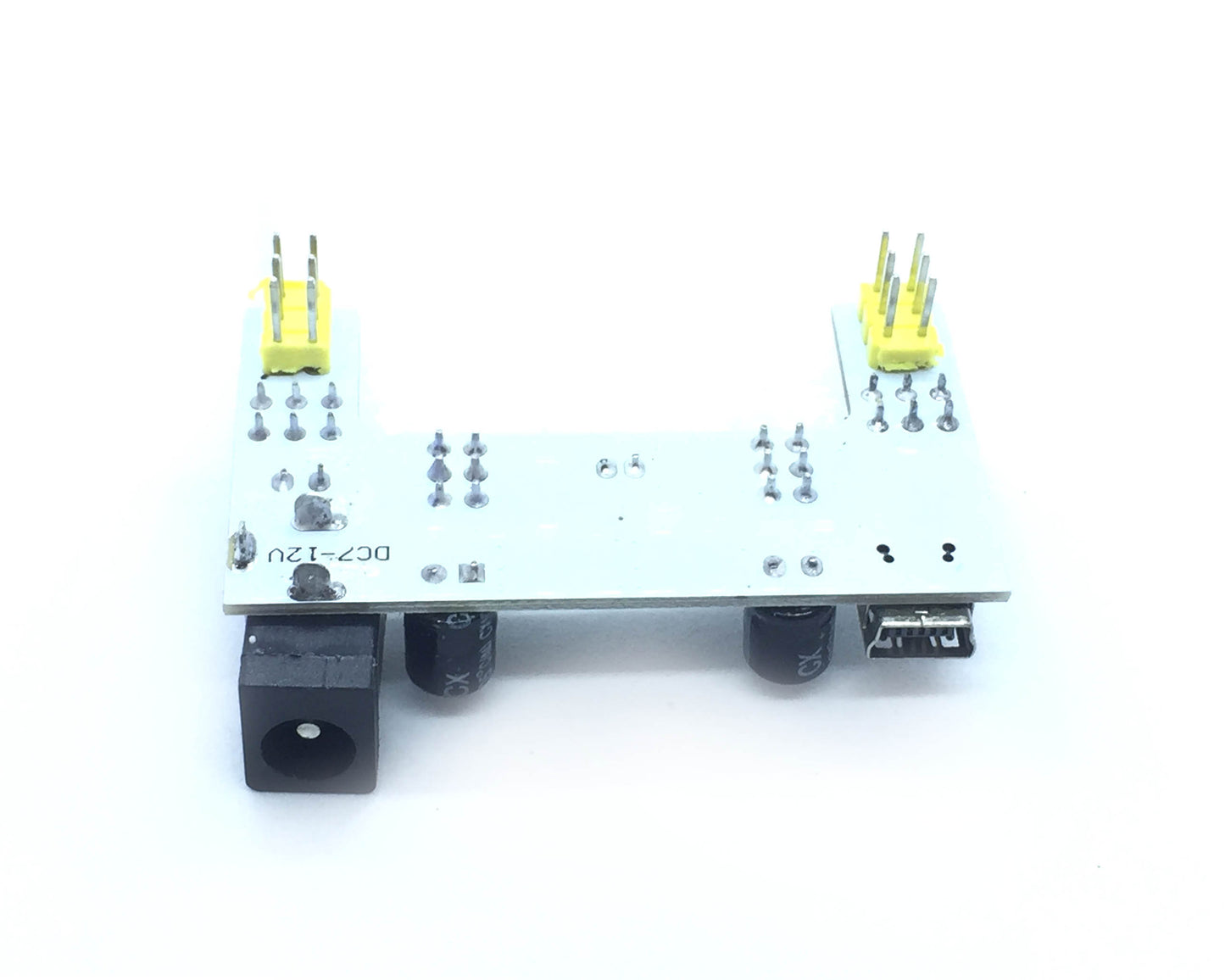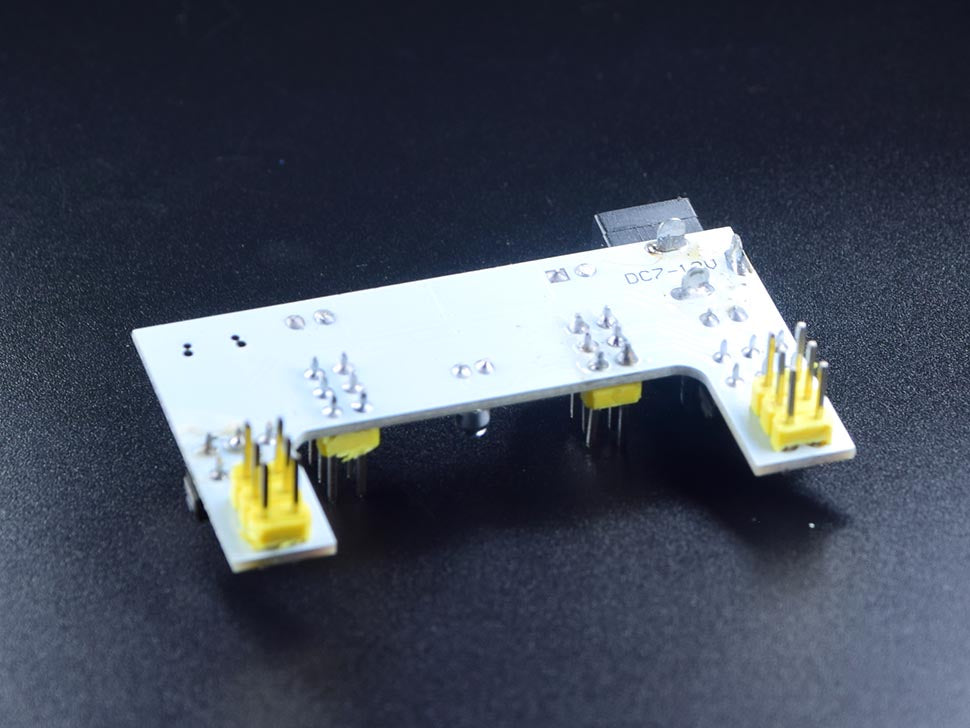Power your breadboard projects with ease using this compact and versatile Breadboard Power Supply Module. Designed to fit all standard breadboards, it delivers either 3.3V or 5V regulated output via a simple jumper cap selector. You can power it through a 6.5V–12V DC input via a 2.1mm barrel jack or directly from a PC using the onboard mini-USB port (5V input). With dual independent output rails, you can choose different voltages for each side of your breadboard or use the same voltage across both. Each side provides up to 700mA of current—perfect for low-power microcontroller projects and sensor modules.
This module also includes reverse polarity protection to help safeguard your components. Its thoughtful design features a concave cutout to overhang the edge of the breadboard, saving space for your prototype. With 0.1" headers for easy insertion and dimensions of 53mm x 30mm, it’s a compact, reliable solution for prototyping. Pair it with a standard 12V 2A DC Wall Adapter (sold separately) for consistent performance.
People Also Ask:
Q1: What do breadboards do?
Ans: A breadboard is a piece of plastic with holes for connecting and plugging in various electronic parts. Long "strips" of holes can be found here. Both bus strips and terminal strips are present on each breadboard. A power supply can be connected to the board and its electronic components using bus strips.
Different electronic components can be plugged into and connected to one another using terminal strips. The electronic components that you plug in are connected inside by metal strips. You can utilize the electronic circuit that is created by these connections to control any of your electronic creations.
Q2: Why do people use breadboards?
Ans: A breadboard can be used for any project involving electronic circuitry. They are simple to connect to devices like batteries, light-emitting diode (LED) lights, and Arduino-compatible microcontrollers.
For electronics projects that require assembly outside of a fully stocked electronics workshop, breadboards are employed. You can build an electronic circuit without soldering or doing anything other than plugging items in because a board's internal workings already provide connections between the electronic components.
They work wonderfully for any electronic circuit that you want to use temporarily, like a prototype or test project. You can swap components around on the breadboard or try something different if you make a mistake or want to tweak something. Because of this, breadboards are fantastic for tasks like prototyping, testing, and any novice electronics projects.
Q3: What Kinds of Breadboards Are There?
Ans: Knowing what kind of breadboard you require is essential before beginning any breadboard project. Solder boards and solder-less breadboards are the two main categories of breadboards.
An actual soldering iron must be used to attach electronic components to a solder board. For permanent projects that need to withstand being installed or used repeatedly, solder boards are preferable. The type of breadboard you'll use for the majority of Thimble.io projects is a solder-less board, which is the plastic board we've been talking about. Using this kind of breadboard eliminates the need for soldering while connecting and disconnecting electronic components.
Breadboard sizes are yet another feature. Both kinds of boards are available in a range of sizes, from extremely small ones for tiny projects to larger ones that allow you to design vast, complicated circuits and provide you with a lot of workspaces.
Technical Details








